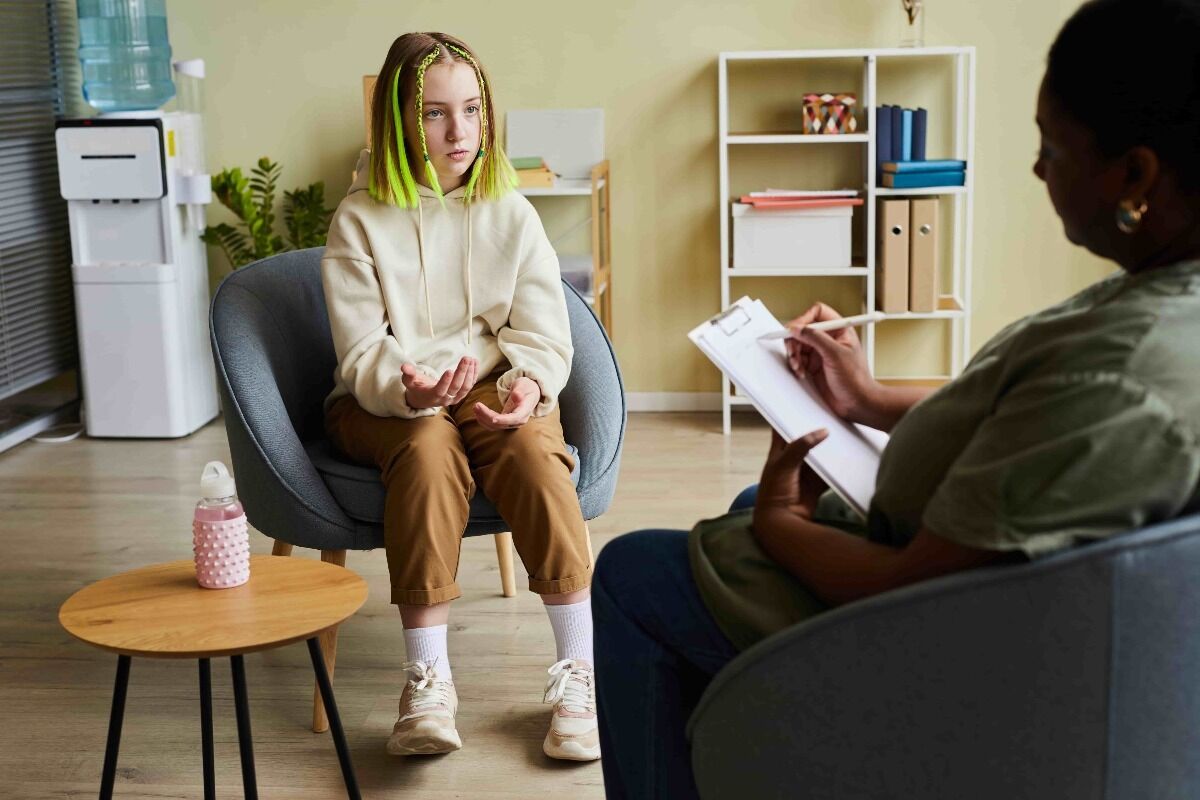How can schools help with mental health? Educational institutions around the country see the everyday struggles of young people. Mental health was always a priority, but post-pandemic, more and more see the increased need for student support. The best way to get that support? Providing mental health experts trained in youth-specific school-based therapy, so students have reliable resources to turn to. Below, discover why therapy matters in educational institutions and learn how to improve mental health in schools with a focused plan of action.
Why it Matters
So, why is therapy so important in K-12, colleges, and universities? Mental health concerns can greatly impact youth experience, hindering their social lives, academic progress, and day-to-day happiness. In school, it often manifests in misbehavior, lack of motivation, or other changes in behavior. Unfortunately, your educational institution is not the only one struggling right now. Schools around the world are noticing an increased need for mental health services. According to research through the National Center for Education Statistics,
“Seventy percent of public schools reported an increase in the percentage of their students seeking mental health services at school since the start of the COVID-19 pandemic, and roughly three-quarters (76 percent) of schools also reported an increase in staff voicing concerns about their students exhibiting symptoms such as depression, anxiety, and trauma.”
How to Improve Mental Health in Schools
Organizations like Mindhues create a holistic mental health solution for schools, with the right resources to make a real difference. They build a custom program that meets the specific needs of your institution and provide a team of highly qualified professionals specialized in youth therapy. See the steps toward implementing an effective mental health program below:
6. Reassess and Adapt Annually
7. Find Qualified Professionals
1. Educate Everyone
All members of your school community – faculty, parents, and students — should receive education to recognize symptoms for mental health problems. That information empowers people to advocate for the youth around them and speak out when they see someone struggling. Education can come in many forms, from written resources and email blasts, to dedicated presentations and assemblies with mental health experts. Getting the right people onboard and delegating those initiatives with a well-defined implementation team is the first step.
2. Create a Safe Space
To encourage more students to come forward when they need help, they need to feel safe doing so. That means vocalizing support for LGBTQ+ students and young people of color, destigmatizing mental health topics, and teaching staff how to make themselves approachable and respond responsibly when a student needs help. All these pieces come together to make a safe space that allows your school to make a bigger and better impact on youth.

3. Intervene Early
Create an academic environment that empowers action and promotes better mental health. If you see repeated bad behavior from a student, do not lean on discipline alone. Note the problem when you see the signs and have a professional intervene early, so they can get help and tools to improve before things get worse. With the right program in place, your staff and parents can quickly step in an bring the problem to the attention of mental health professionals. The tools provided by trained therapists build social and emotional competency so youth can overcome the issues they face.
4. Support Faculty Members
Your faculty are the backbone of your school and their mental health needs to always remain a priority as well. The best way to avoid burn out and frustration? Don’t make them handle it all alone. Support them and provide tools to better handle tough classroom situations. When students have mental health resources, they can take actionable steps to improve behavior and show up better during their lessons. However, that typically requires intervention from a youth therapist. Create a solid, efficient process for teachers to report a concern and get help from an expert as soon as possible.
5. Create the Right Plan
Every school or campus is different and has different needs when it comes to their student community’s mental health. That means you should never go with a one-size-fits-all approach to your mental health program. Depending on the size of your institution, the current state of your program, and the need of your students, things can vary greatly. It’s also best to align your mental health initiatives with your academic programs to increase the likelihood of buy-in on the administrative level. Leadership needs to get involved to receive the proper resources and funding to proceed. According to the National Center on Safe Supportive Learning Environments,
“Administrator buy-in ensures that staff will be supported in delivering the program and that resources will be reallocated as needed to do so. Administrators can also create policies for systems change to support effective implementation.”
6. Reassess and Adapt Annually
Things change rapidly in any academic environment, which means your mental health services need to stay agile to remain effective. Use every year (or better yet, every semester) as an opportunity to evaluate what’s working, and what needs adjustments. That means you need to gather data consistently to learn, adapt, and pivot. Then, you can create new and improved solutions based on feedback from staff and students and other well-documented outcomes. With this information, you can continually optimize your services and bring better opportunities to the young people who need it.

7. Find Qualified Professionals
Many educational institutions know they need help and want to address this issue head-on but can’t find the qualified youth therapists to fit the positions. Finding the balance between staffing, qualification, and budgeting can be a major hurdle. In fact, according to research through the National Center for Education Statistics,
“The three most prevalent limitations identified by these schools that limit their ability to serve their students’ mental health needs were an insufficient number of mental health professionals to manage their school’s caseload, inadequate access to licensed mental health professionals, and inadequate funding.”
The people who put these plans into action need to have an expert-level understanding of school-based youth therapy programs. Strategy needs to go into every aspect from recruitment to delegation and process optimization.
How Schools Can Help with Mental Health Today
So, how can schools help with mental health today? Get the right people on your team. That way, professionals can help you execute on every step of this list (and beyond). With the resources and experienced professionals bringing these programs together, you can help your students sooner.
How to Improve Mental Health in Schools: Get Help from Mindhues
If you’re wondering how to improve mental health in schools within your district, Mindhues can help. We create custom solutions for schools across the United States to provide better mental health resources to youth. With the help of our team, you gain access to highly qualified licensed youth therapists, and a partner in building a seamless system within your school.
Contact Mindhues today to start building your school’s mental health solution today.




